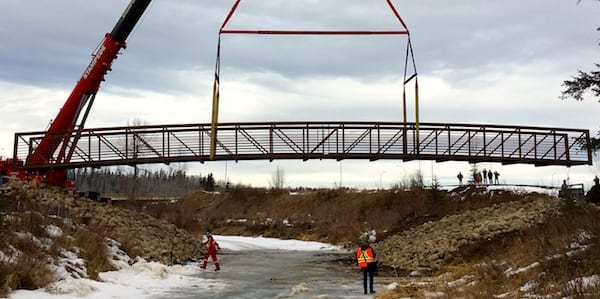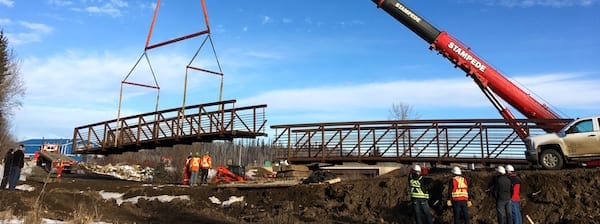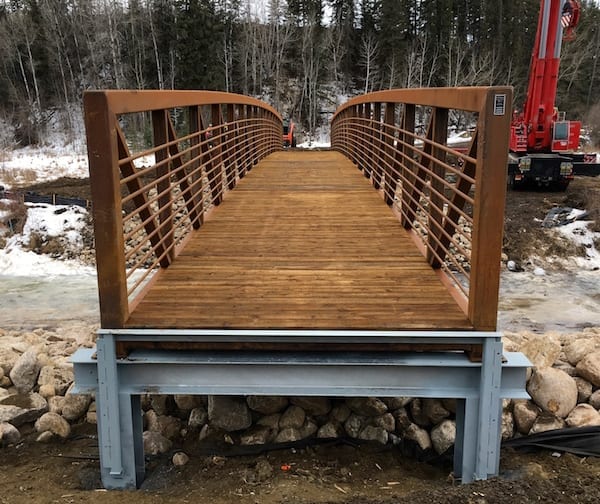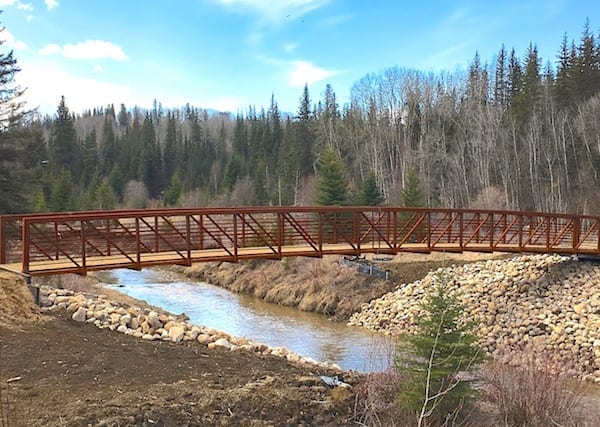Bridge connects historic Alberta trail system for Canada’s 150th
AIL recently supplied an economical bridge to connect the Athabasca Landing Trail with its namesake, Athabasca Landing — now known as the town of Athabasca, about 145 km north of Edmonton.
Owner approves of “Approved Equivalent” bridge
The tender originally specified a “Pre-engineered Pedestrian Bridge” from another manufacturer or an “Approved Equivalent.” We put forward an “Equivalent” from our AIL Group sister company, Algonquin Bridge, which was the low bid bridge for the project and was approved for construction.
The bridge was supplied in two sections, spliced together on-site and lowered onto its steel H-piling supports on February 16, 2017, as representatives from the Athabasca Landing Trail Committee, The Trans Canada Trail and Athabasca Town Council looked on.
Wide enough for horse-drawn carriages
The Underhung Truss bridge was designed as specified to the CAN/CSA S6 2014 Canadian Highway Bridge Design Code for a specified truck loading of 6000 kg. At 3 m, it is wider than many trail bridges to accommodate service vehicles and horse-drawn wagons or carriages. At 36 m, it is the longest of several bridges on the Trail that runs south through three counties.
Ready for Canada’s 150th
AIL worked closely with the contractor and consultant to design and supply the bridge to suit the project schedule. We understand that all parties are happy with the bridge and excited to see it connect their trail system in conjunction with Canada’s 150th celebrations. Runners in the Athabasca Ultra 100 Marathon will cross it just before the finish line in July.
Recreating an historic route
Today’s Athabasca Landing Trail is a non-motorized recreational trail that, wherever feasible, follows the route of the historic Athabasca Landing Trail, dubbed “The 100-Mile Portage,” which was built in 1876. It is also part of the Trans Canada Trail and the start of its only overland route into Canada’s northern territories.











